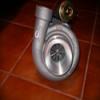gt 30 dyno results
Announcements
-
Similar Content
-
Latest Posts
-
Provided that what you see makes sense and is not "linear" between, say 1.9 and 2.1 volts and that's the whole range you get. You still need it to be doing one end of the 0-5v range at one end of travel, and the other end of the 0-5v range at WOT.
-
By BASHERnissan · Posted
So just calibrate whatever voltage the closed position and full throttle position is and check linearity ? Sounds good to me -
By Dose Pipe Sutututu · Posted
go look at the live data, and slowly open and close the throttle, if it is moving in a linear fashion, just do a re-calibration. OR if you really want to, adjust the TPS position so it's under 1V (no need to be bang on a 0,45V, it's not a stock ECU), then recal. Job done, rip skids, post it here.
-






Recommended Posts
Create an account or sign in to comment
You need to be a member in order to leave a comment
Create an account
Sign up for a new account in our community. It's easy!
Register a new accountSign in
Already have an account? Sign in here.
Sign In Now